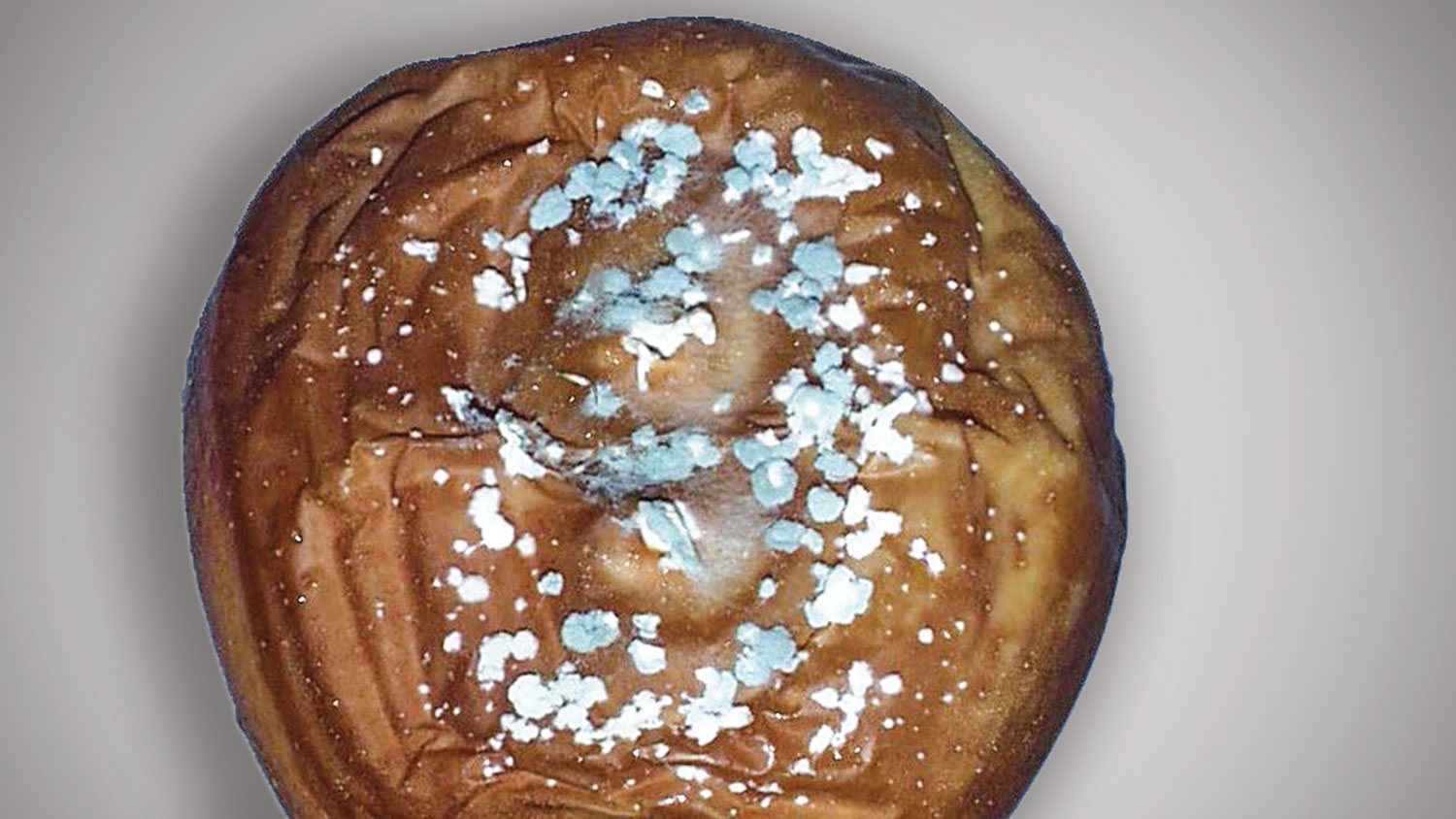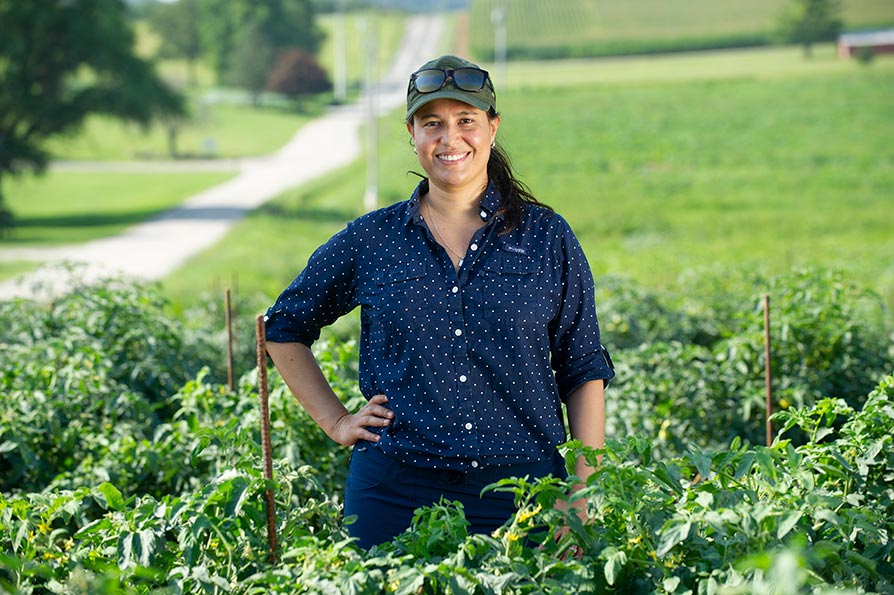Major Challenges to the Fruit Industry Are Closer than You Think
The message, “Objects in the mirror are closer than they appear” you might recall, is etched onto the side mirrors of vehicles we drive, but how does that apply to a USDA-funded research project?
It applies directly, according to Bruce Grim, Manager of the Washington state-based Marketing Associations. He argues that serious challenges to the country’s tree fruit industries are just like that message on the mirrors — a lot closer than they look. Thus, to remain profitable, it is critically important that researchers deliver results to growers that address these challenges, and the sooner the better.
It applies directly, according to Bruce Grim, Manager of the Washington state-based Marketing Associations. He argues that serious challenges to the country’s tree fruit industries are just like that message on the mirrors — a lot closer than they look. Thus, to remain profitable, it is critically important that researchers deliver results to growers that address these challenges, and the sooner the better.
Grim is in an excellent position to identify those challenges and assess their urgency. In his current position, and with his experience as a tree fruit producer and on industry boards like U.S. Apple Association and the Washington State Horticultural Association, he is thoroughly familiar with the whole tree fruit supply chain and knows where innovation is required.
He is also a member of the Advisory Panel of the USDA-National Institute of Food and Agriculture Specialty Crop Research Initiative project called RosBREED, for which I am the Extension Team Leader.

Apple blue mold is a serious postharvest disease exhibited as watery regions where areas of blue-green tufts of spores develop. (Photo: W. Janisiewicz, USDA-ARS)
Breeding Disease Resistance
This RosBREED 2 project, led by Drs. Amy Iezzoni at Michigan State University and Cameron Peace at Washington State University builds directly on RosBREED 1, which developed and applied DNA-based information to enhance the efficiency and effectiveness of rosaceous crop breeding programs.
Specifically, RosBREED 2 seeks to develop rosaceous cultivars that meet industry needs for durable disease resistances and productivity and consistently exceed consumer expectations with satisfying appearance, aroma, flavor, market life, and texture.
Project team leaders meet annually in January with RosBREED’S Advisory Panel (including this magazine’s own Dave Eddy). This year were gathered 15 team leaders and 24 of our 31 Advisory Panel members. Once again, we provided updates on project progress and also described plans for the third year of this five-year project.
One constant theme of both RosBREED projects is an energetic effort to obtain constructive criticism and guidance from the Advisory Panel. That input is shared and incorporated into the next year’s work plan, reflecting the SCRI’s intent to genuinely engage stakeholders.
At our recent meeting, Grim urged the project team to ensure its outcomes lead to measurable progress in two key areas: 1) providing the consumer and the grower with better products; and 2) addressing tree fruit industry labor needs. As he put it: “We need more consumers that want what we are producing and we need to significantly reduce grower production risks driven by rising input costs and ever-scarcer labor.”
Ambition Wanted
He was not alone. Jim Allen, an Advisory Panel member and recently-retired President of the New York Apple Association, was (as usual) quick to comment, pushing the project team to be ambitious and deliver new cultivars that don’t simply fill a need, but “delight the consumer.”
Another Advisory Panel member, Bill Dodd, President of the Ohio Fruit Growers Marketing Association (and American Fruit Grower® and Western Fruit Grower® magazine’s 2015 Apple Grower of the YearSM), piled on, observing that the project was heading in the right direction, but pointing out the tree fruit industry needed research products quickly, regardless of location and scale of operation.
Dodd went on, emphasizing he felt the RosBREED team was moving in the right direction, but lamenting the long-term nature of the research process.
“I guess we are in the grinding-it-out phase,” he concluded.
Challenges Are Coming Fast
Imagine how these comments hit the RosBREED team. After a year of progress and weeks of preparation and fine-tuning the day’s presentations, filling them with exciting (at least to us) scientific discoveries, we certainly liked hearing we were heading in the right direction, but we wondered if we were making any sufficient progress for stakeholders in the short term.
Our industry stakeholders have contributed wonderfully to RosBREED from its initial conceptualization nearly eight years ago. They have been engaged, insightful, and demanding. At this meeting they wanted to make it clear our nation’s rosaceous crop industries are facing challenges that are — just like vehicles in the mirror — closer then they appear. Time is short.
From the research perspective, like it or not, especially in crops like perennial fruit species, it is awfully hard to accelerate the biological clock and rapidly deliver the knowledge or products stakeholders want, as if they were shopping at Amazon.
Results Are Paying Off
And while it might not be rapid enough to completely satisfy our stakeholders, RosBREED is starting to deliver exactly the kind of results we promised we would.
We have started with superior germplasm and DNA-based diagnostics tools enabled by RosBREED 1. In RosBREED 2 we have fine-tuned disease-screening protocols and identified new sources of durable plant resistance across a range of 11 disease nemeses attacking seven rosaceous crops. We are improving breeding populations with those resistance factors and implemented advanced statistical approaches to make the selection process more reliable and efficient.
As one such example is the University of Florida strawberry breeding program led by Dr. Vance Whitaker. RosBREED-developed data and genetic tools enable him to advance breeding selections at an accelerated rate, so Vance will be able to deliver disease-resistant, aromatic, and flavorful new cultivars more quickly.
The project’s other crops — apple, blackberry, peach, rose, sweet cherry, and tart cherry – take a little more time than strawberry, but they too are starting to gain similar traction.
Genetic Insight Valuable
Equally important as the progress on the crop side are the datasets and genetic information generated by RosBREED. They are curated at the Genome Database for Rosaceae by team member Dr. Dorrie Main in Pullman, WA, and are available internationally. This sharing of intellectual property further accelerates research progress, noted Advisory Panel member Bob Gix of Blue Star Growers, and such communication and synergy is exactly what rosaceous crops need.
Another product enabled by the scientific network to which RosBREED contributes is the capability to more rapidly address emerging threats, like Armillaria, a fungus that endangers peaches in the Southeast, cherries in Michigan and almonds in California. Thus, even though almond is not directly included in RosBREED 2, the datasets and techniques it develops will allow scientists working in that crop to make progress more quickly in finding genetic solutions to combat this devastating disease, an outcome that Bob Curtis, an Advisory Panel member representing the Almond Board of California, called “wonderful.”
At the end of that long day, it was clear to all that while progress can never be quick enough, the USDA’s investment in the RosBREED and other SCRI projects, continues to pay off.
So, as Advisory Panel members return to their day jobs, the RosBREED project teams return to their workplaces, encouraged they are on the right track and motivated to keep grinding it out and making the future arrive more quickly.










